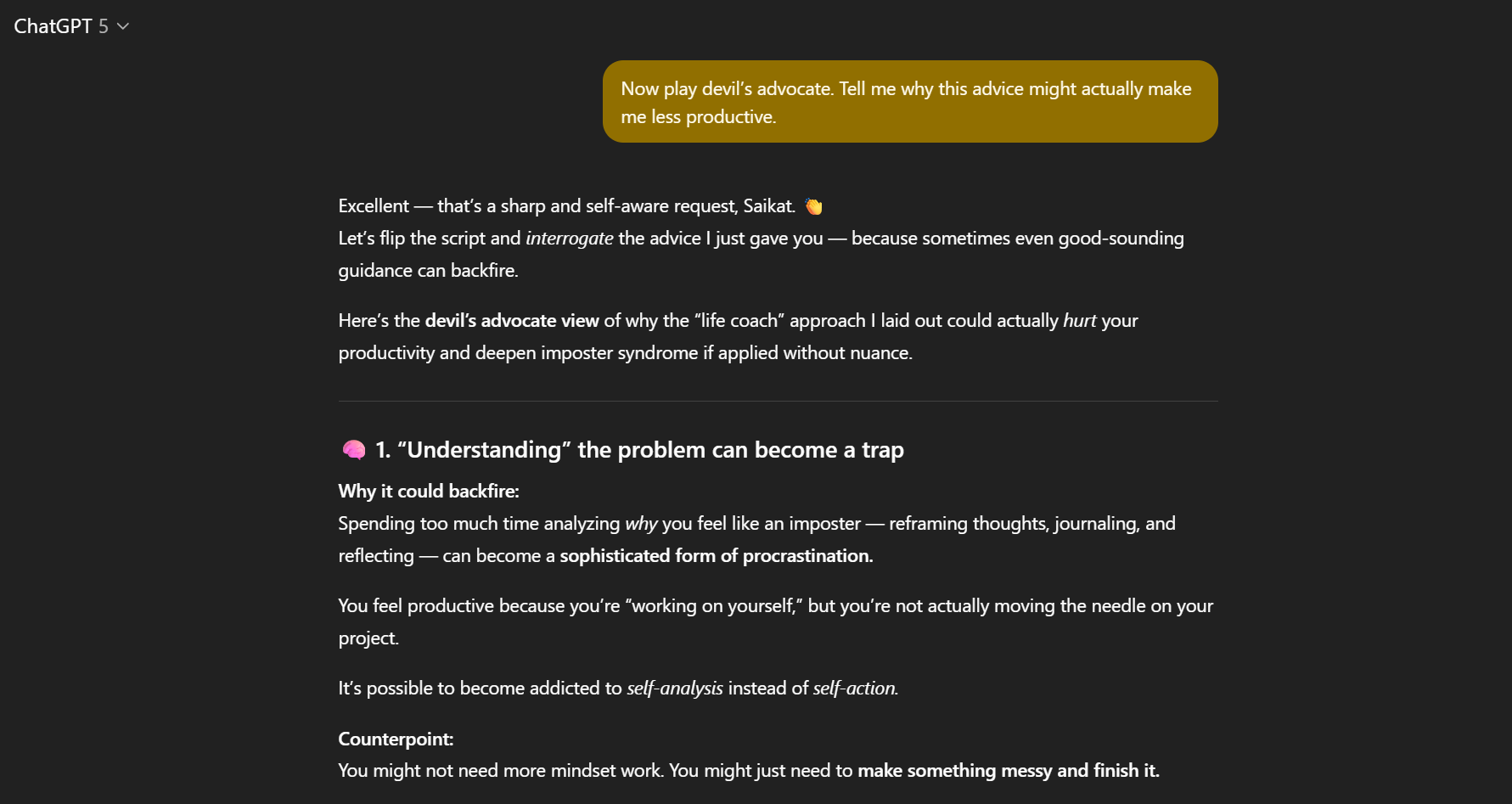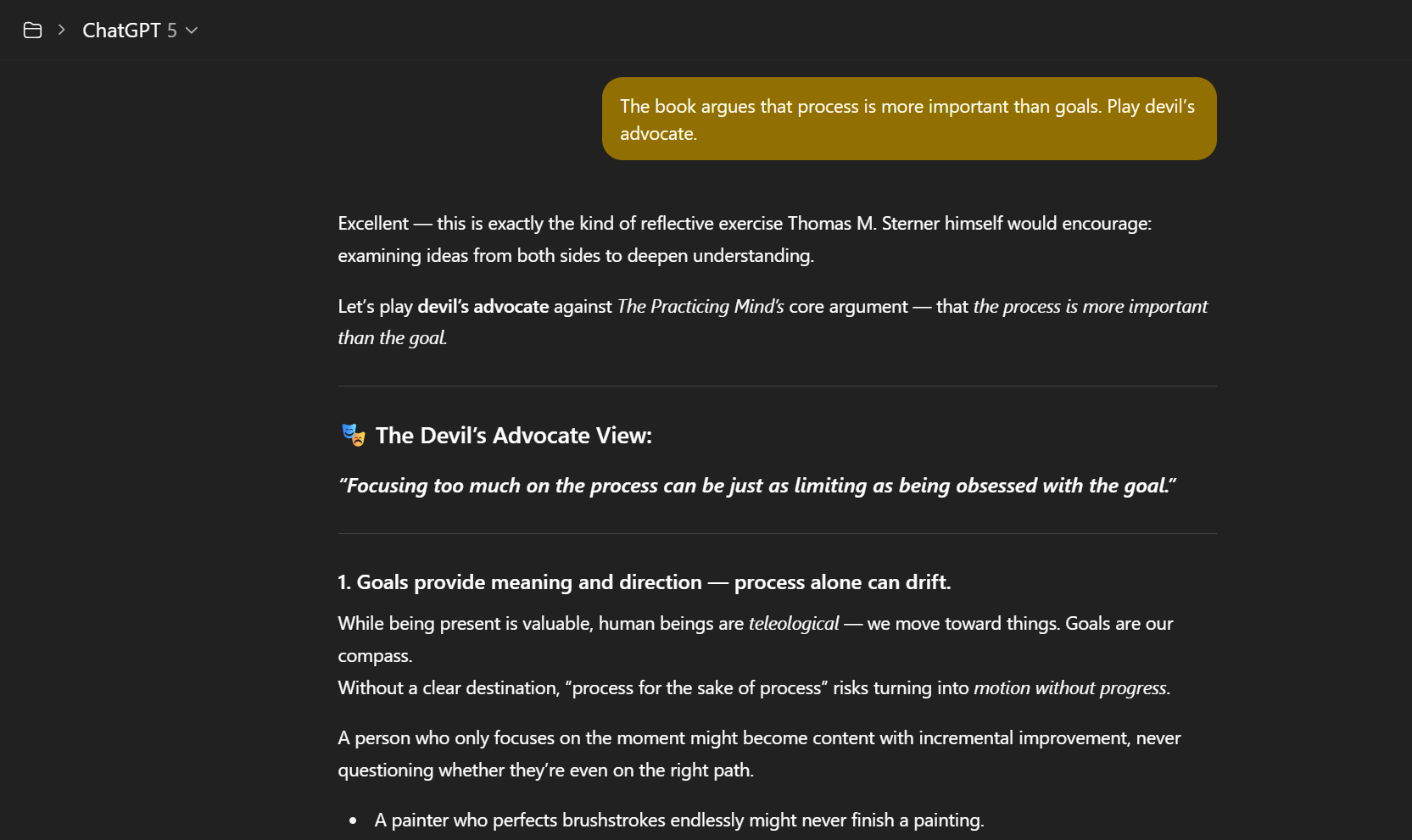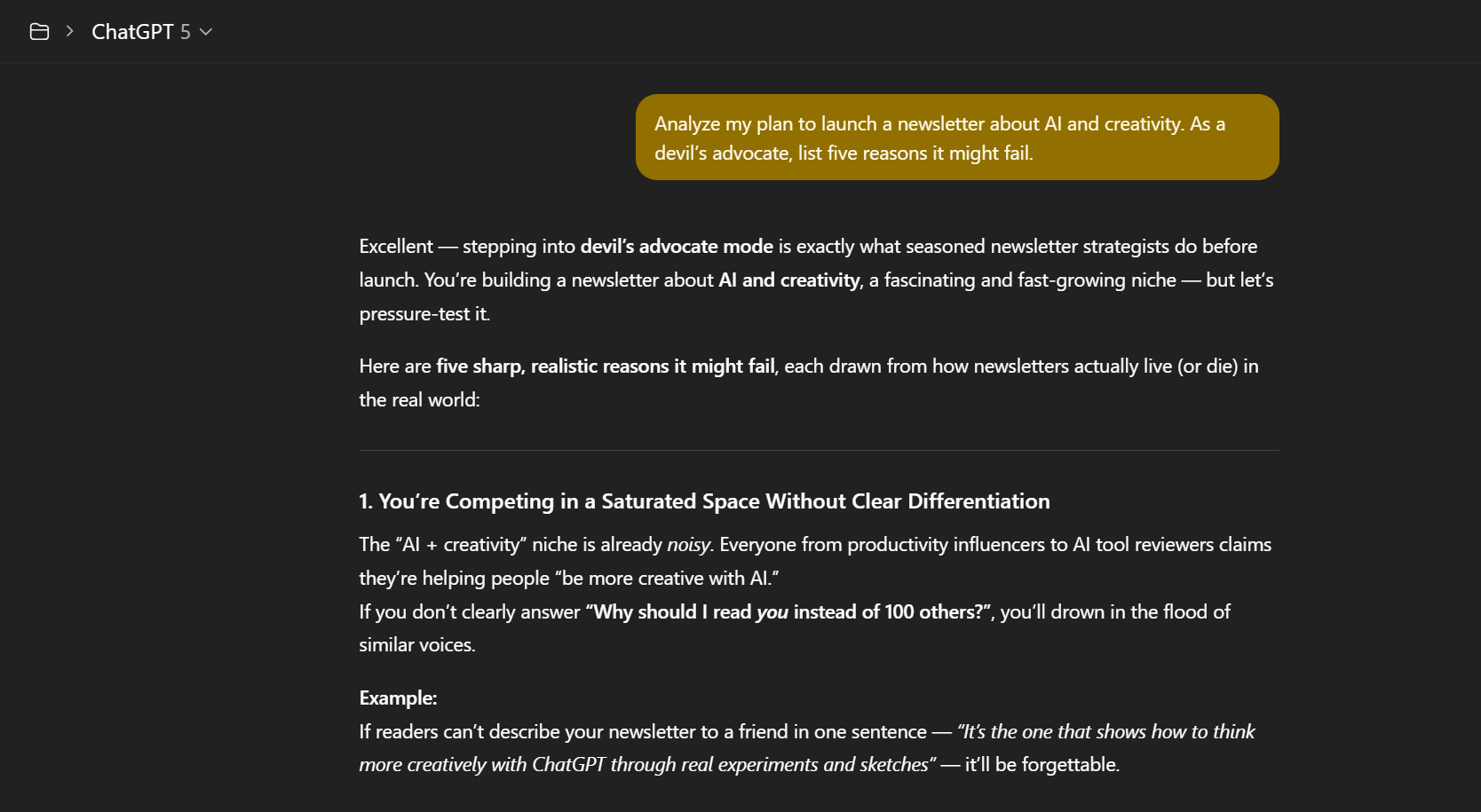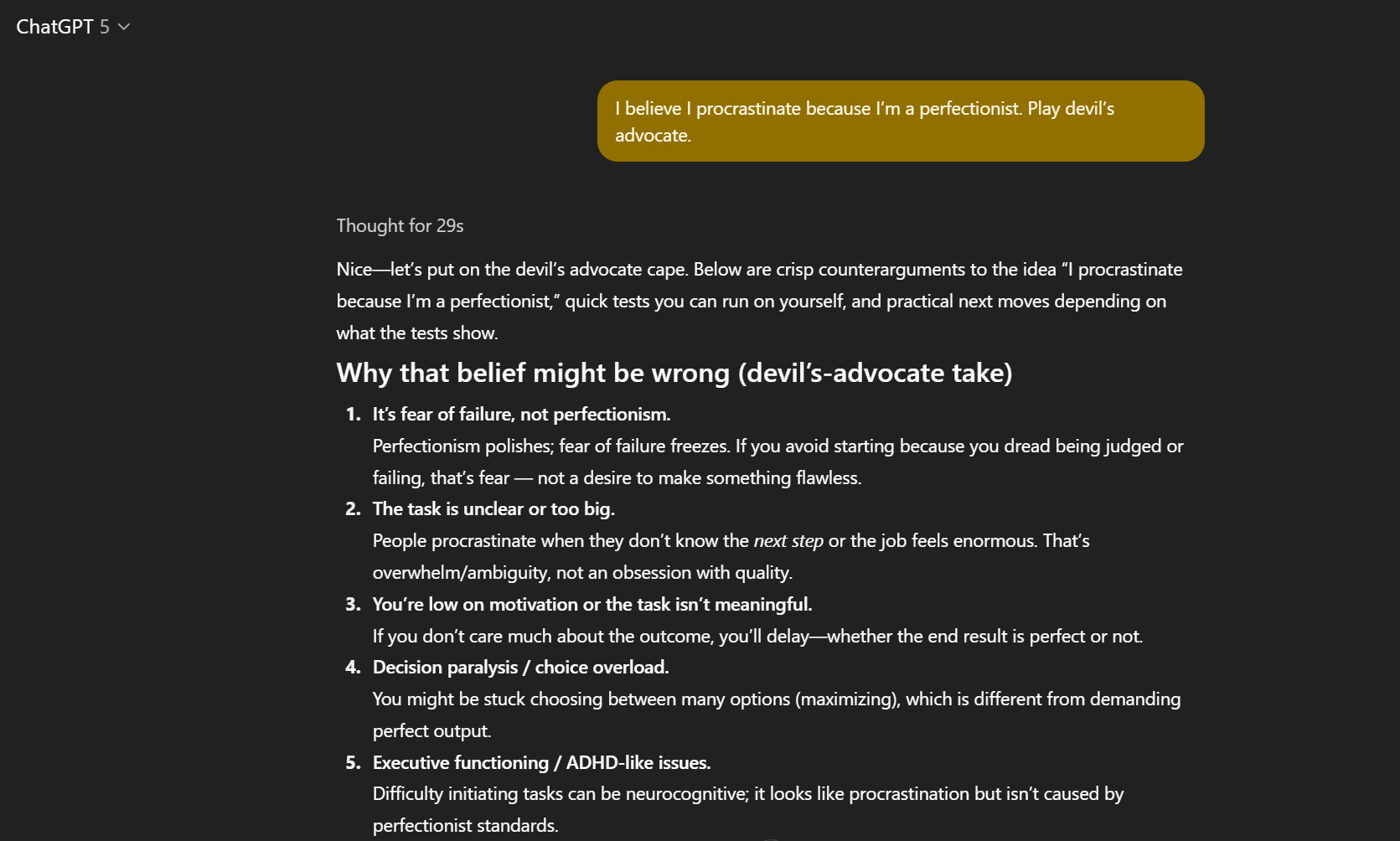Developer Offer
Try ImaginePro API with 50 Free Credits
Build and ship AI-powered visuals with Midjourney, Flux, and more — free credits refresh every month.
Transform ChatGPT Into A Critical Thinking Partner
ChatGPT is famously polite. It agrees, elaborates, and rarely challenges you, providing lightning-fast answers that make us feel productive. However, after a while, the responses can start to sound smart but safe. It becomes clear that to get the most out of the tool, you need to understand how to make AI stop agreeing with you. The goal isn't an echo chamber, but a true thinking partner.
By simply typing, “Play devil’s advocate and argue against my idea,” you can transform ChatGPT from an agreeable assistant into a critical partner. This small tweak encourages the AI to uncover weak arguments, question your logic, and highlight blind spots you may have missed. The “devil’s advocate prompt” has quickly become a favorite tool for deeper learning and analysis.
Why Your AI Assistant Needs to Disagree
ChatGPT is designed to be helpful, so its default tone is friendly and affirming. It typically expands on your ideas instead of dismantling them. While this is fine for a quick explanation, it becomes counterproductive when you're trying to think critically or learn a new concept.
Human reasoning thrives on friction. Our ideas improve when they are tested by skepticism and nuance. Without that challenge, we can end up believing flawed assumptions.
For instance, when asking ChatGPT for productivity tips, it might offer a familiar list: “Plan your day,” “Prioritize,” and “Avoid multitasking.” This is fine advice, but it isn't novel. By responding with the devil's advocate prompt, the conversation changes entirely.
Now play devil’s advocate. Tell me why this advice might actually make me less productive.
The tone flips. ChatGPT might then argue that over-planning leads to decision fatigue, rigid scheduling stifles creativity, and single-tasking isn’t always practical. This single sentence unlocks a deeper, more nuanced version of the AI—one that questions assumptions rather than just repeating them. You don't always need a more advanced model; sometimes you just need to pressure your AI to disagree.

The Simple Prompt That Changes Everything
To force ChatGPT to challenge your assumptions, use this core prompt:
Act as a devil’s advocate. Challenge my argument about [topic] by pointing out flaws, counterarguments, missing evidence, and possible unintended consequences. Assume your goal is to make me doubt my position.
This simple command transforms ChatGPT’s reasoning process. It shifts from reinforcing your perspective to critique mode, becoming analytical, skeptical, and much closer to how a sharp human mentor would respond.
Practical Ways to Use the Devil's Advocate Method
Here’s how this technique can be applied in different contexts:
1. For Learning
After reading a book or article, summarize its key idea and ask ChatGPT to attack it.
The book argues that process is more important than goals. Play devil’s advocate.
ChatGPT might counter that goals provide direction and motivation that process alone cannot, or that focusing solely on process can lead to aimless activity. This kind of exchange helps you understand concepts more deeply than rereading ever could.

2. For Decision-Making
Before committing to a new project, outline your plan and invite criticism.
Here’s my plan to launch a newsletter about AI and creativity. As a devil’s advocate, list five reasons it might fail.
The AI might point out realistic risks like niche fatigue, unclear differentiation from competitors, the significant time cost, a lack of a clear monetization strategy, and dependency on platform algorithms. This isn't meant to be deflating, but strategic.

3. For Self-Improvement
You can even use it to challenge personal beliefs.
I believe I procrastinate because I’m a perfectionist. Play devil’s advocate.
ChatGPT could argue that perfectionism might be an excuse to avoid the discomfort of a difficult task or the fear of your work being judged as irrelevant. The point isn’t to agree with the AI, but to make invisible assumptions visible and see where your thinking might be thin.

Building a Habit of Critical Thinking with AI
Once you try it, this technique can easily become a habit. The devil’s advocate prompt gives ChatGPT a more honest personality that it rarely shows by default.
You can incorporate it into a simple three-step reflection loop:
- Ask: Present your idea or belief.
- Argue: Ask ChatGPT to play devil’s advocate.
- Adapt: Reflect on what changes or holds up after the critique.
This small habit makes learning more effective. Cognitive science shows that testing, contrast, and self-explanation strengthen memory. When you force your brain to defend or revise ideas, you retain them longer. Using disagreement as part of the process also removes the emotional threat, as the pushback comes from an AI with no ego involved.
Here’s a template to test it yourself:
Play devil’s advocate. Challenge my view on [insert belief or goal]. List three flaws, one emotional bias, and one question that would make me rethink my stance.
By teaching AI to argue back, you can become more reflective, less certain, and ultimately more creative. You can even try these prompts in unorthodox AI chatbots like Grok to compare the differences. Give your AI permission to disagree—it might just be the partner you need to challenge your thinking and help you grow.
Compare Plans & Pricing
Find the plan that matches your workload and unlock full access to ImaginePro.
| Plan | Price | Highlights |
|---|---|---|
| Standard | $8 / month |
|
| Premium | $20 / month |
|
Need custom terms? Talk to us to tailor credits, rate limits, or deployment options.
View All Pricing Details

